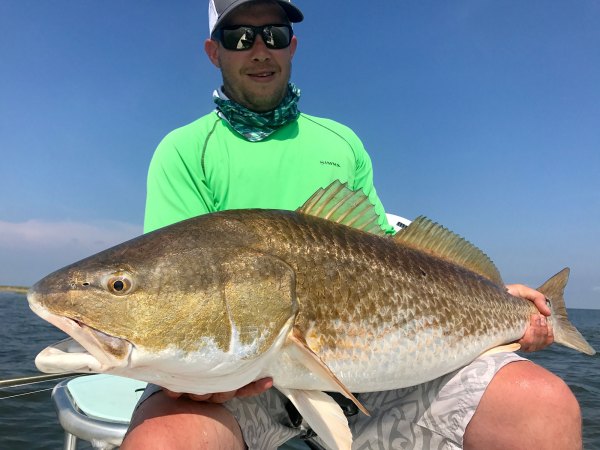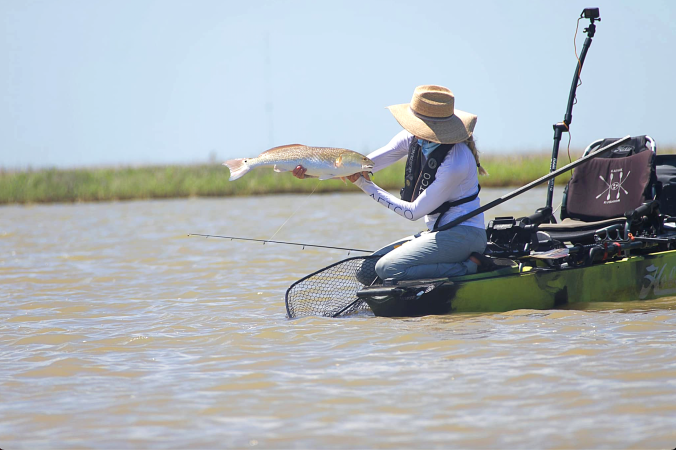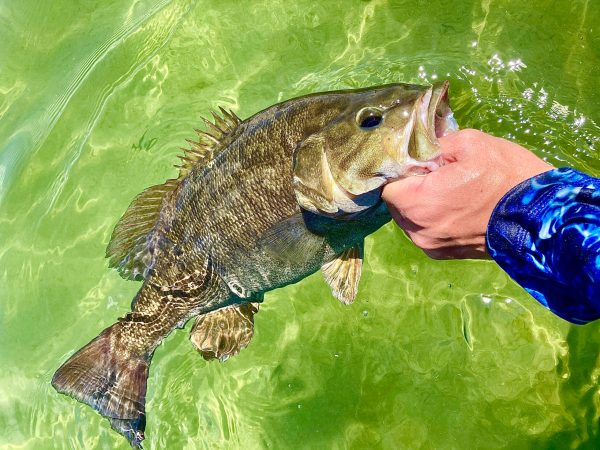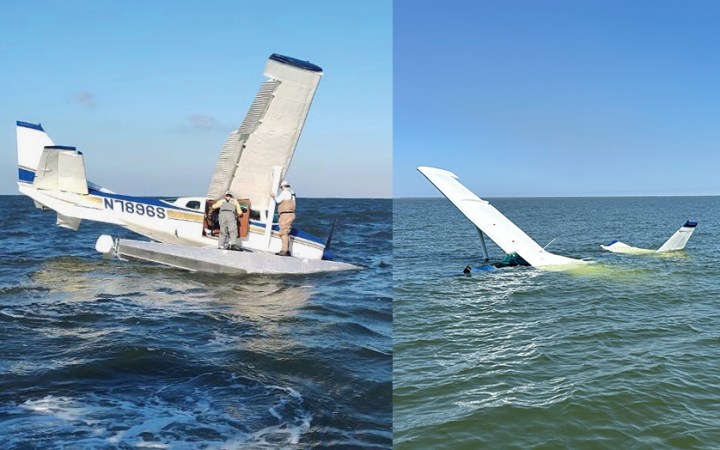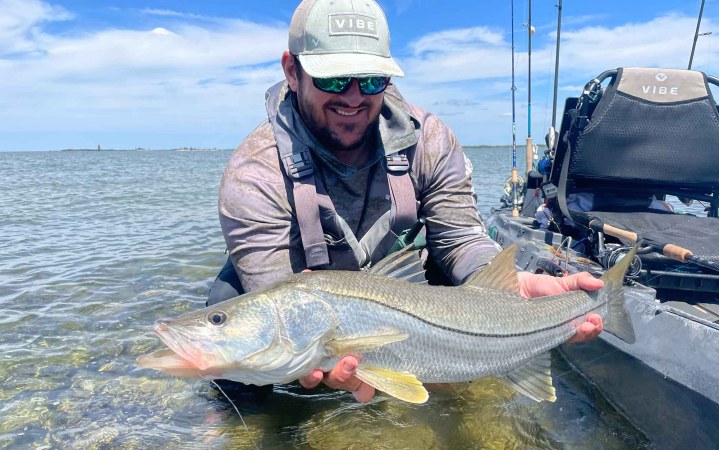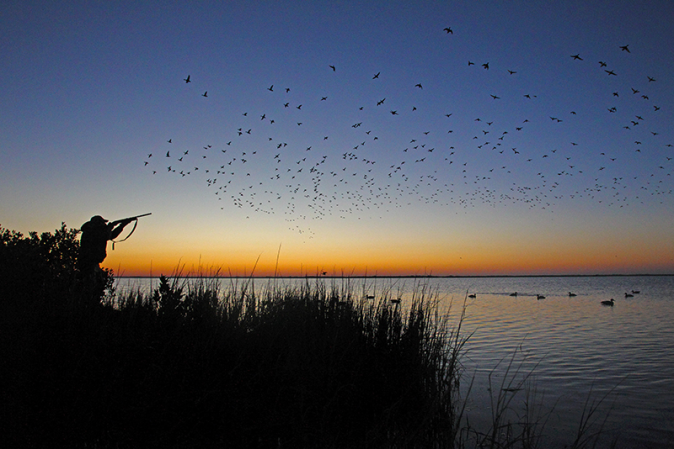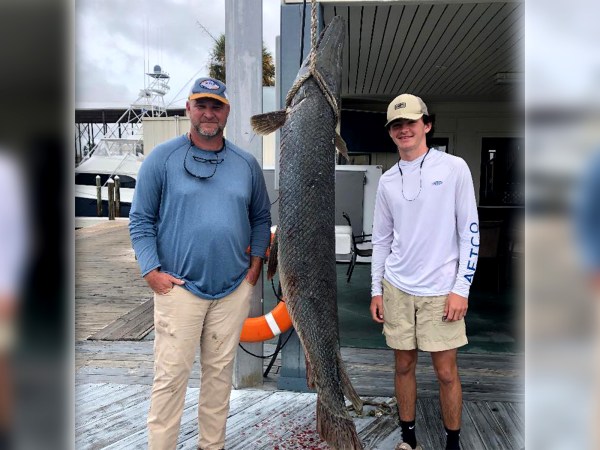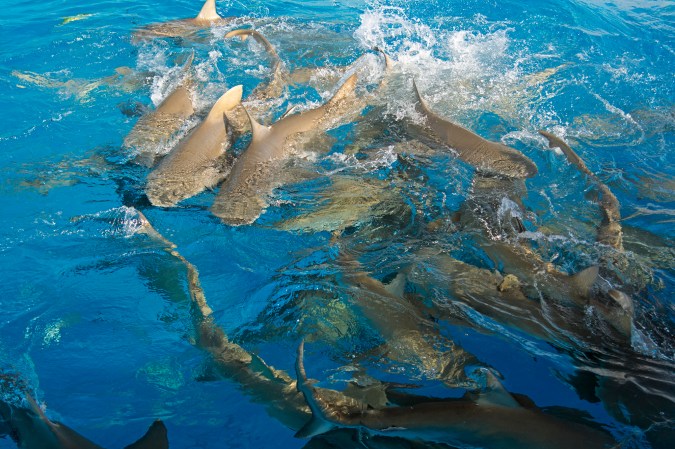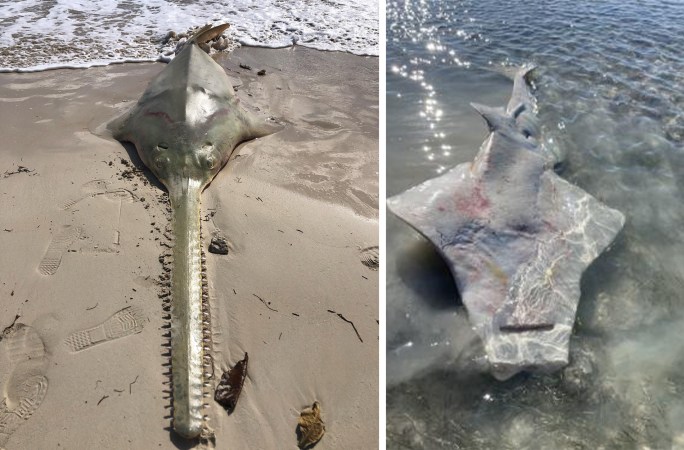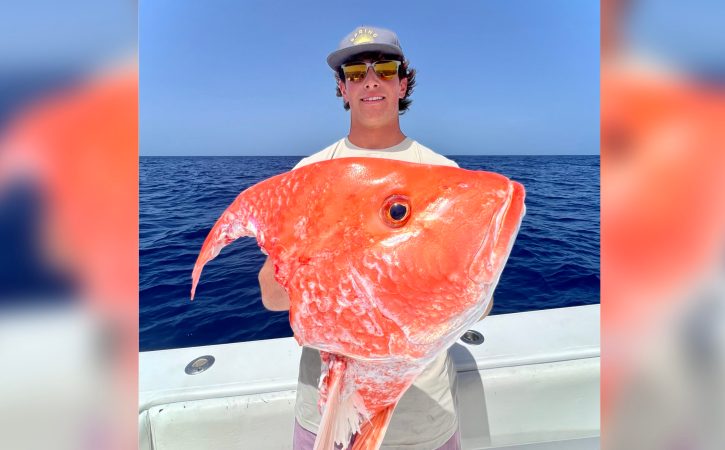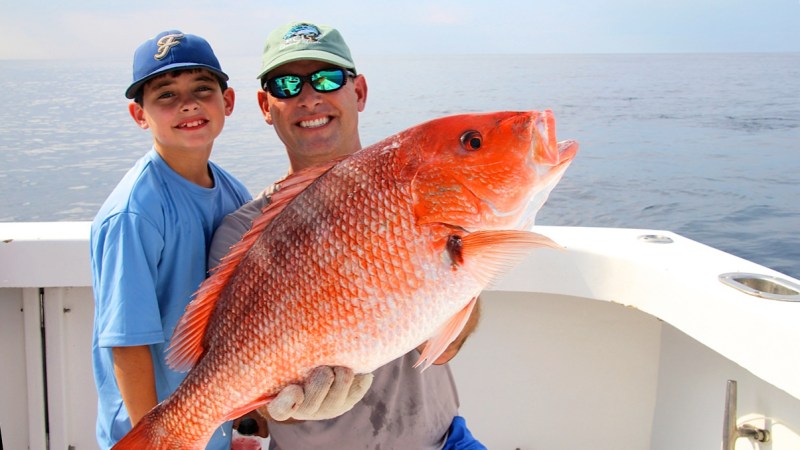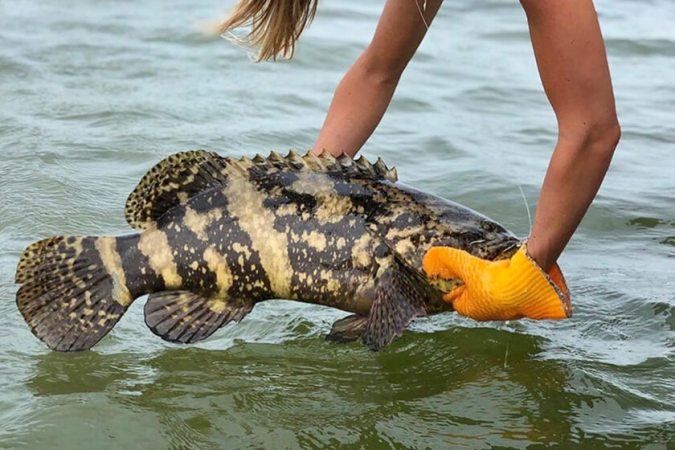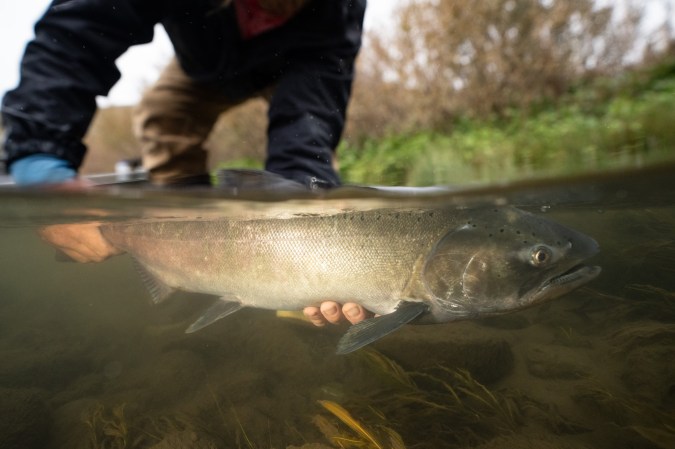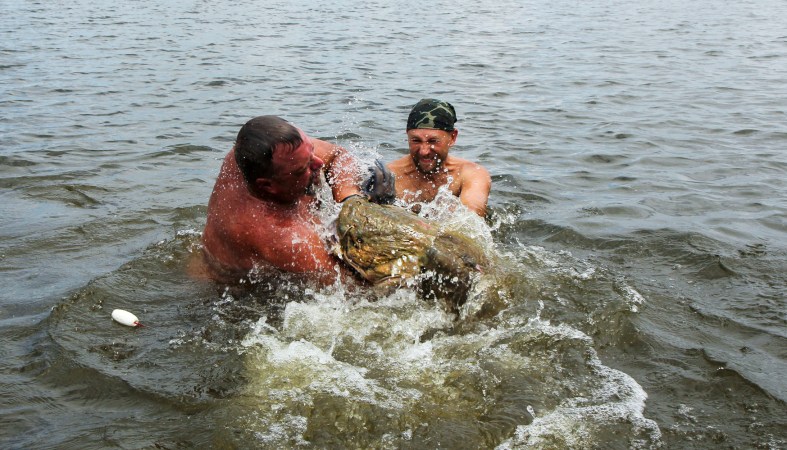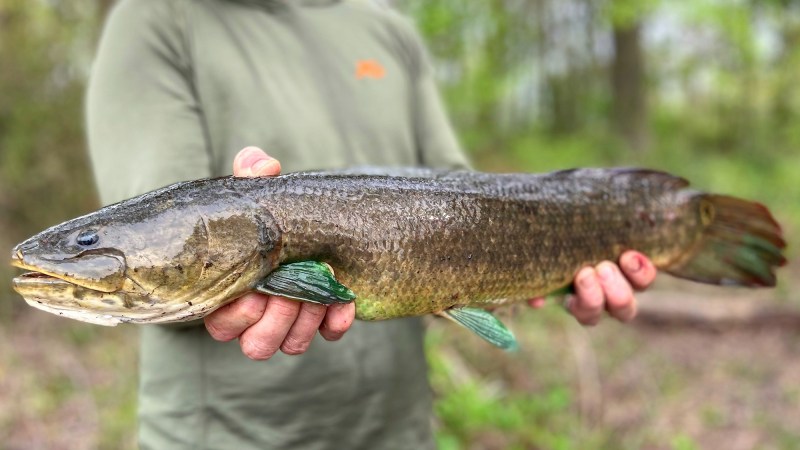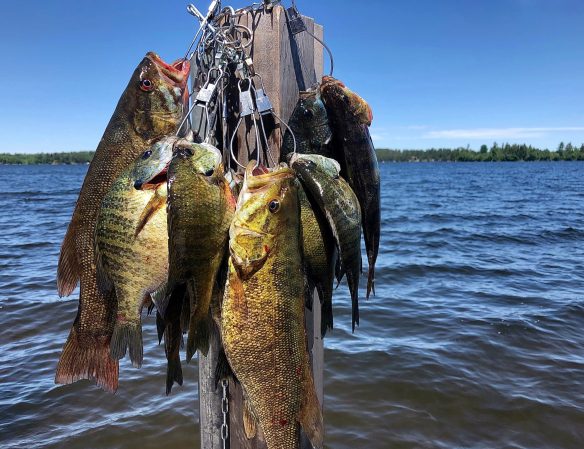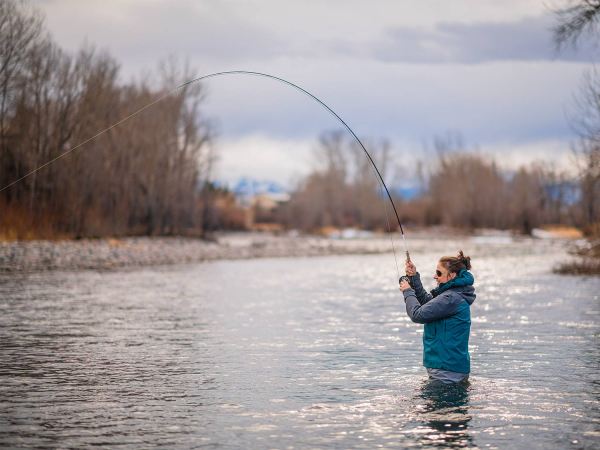Beginning June 20, there will be new harvest and size limit restrictions on Louisiana’s popular redfish for the first time since the 1980s. The new regulations are being implemented to improve the state’s redfish population, which has been in recent decline according to state fisheries biologists and managers.
Regulation changes include: four reds per person daily (reduced from five), with a minimum size limit of 18 inches (increased from 16 inches). The maximum size of a keeper redfish will be 27 inches, with no exceptions — a change from previous rules that allowed one fish over 27 inches to be harvested. Charter captains and crews will be prohibited from keeping fish during a hired day on the water with clients. (Previously it was common for redfish guides to fish during a charter trip and keep their own limit).
Louisiana’s Wildlife and Fisheries Department has been studying redfish intently in recent years. Last March the agency indicated that a 2022 assessment showed a reduction in redfish limits was needed to maintain a healthy fishery. That LWFD assessment found:
- Red drum stock is not overfished (depleted), but overfishing is occurring.
- Overfishing has occurred frequently in the most recent decade (80%).
- The spawning potential began trending downward in 2005.
- Recent recreational landings are at the lowest level observed since the 1980s.
- The current redfish recruitment estimate is at the lowest level ever observed and has been declining since 1994
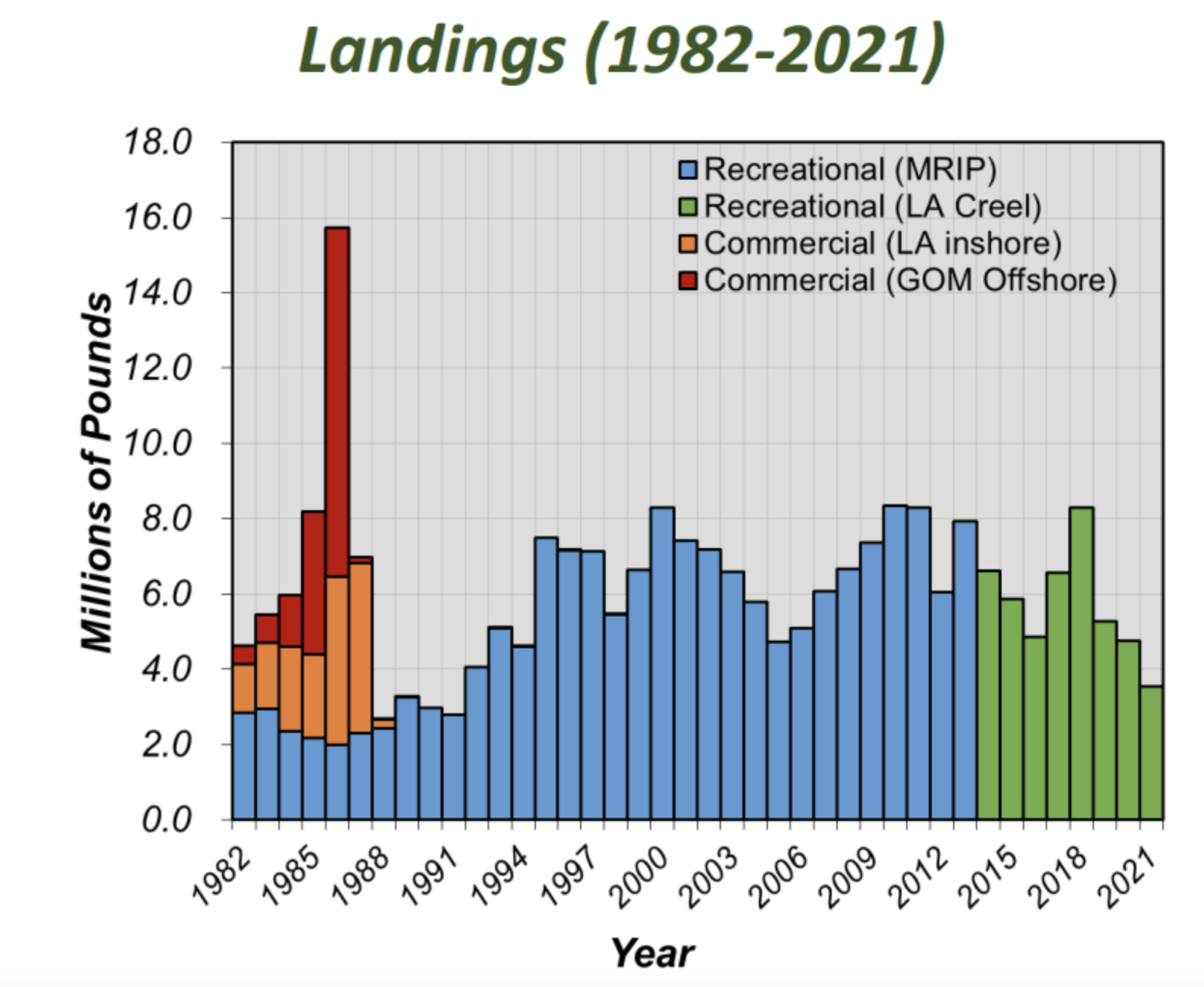
Courtesy LWFD
Anglers, guides, and others interested in the fishery have had ongoing discussions about what new limits should be implemented. Some fishing guides say that restricting limits will hurt business, and that the main issue is habitat loss, not overfishing. The state has a recreational fishing industry that drives $2.5 billion in economic impact and supports nearly 18,000 jobs, according to the L’Observateur. Recreational anglers targeting redfish there spend an average of $1,100 a day.
While not everyone agrees with the forthcoming restrictions, some longtime Louisiana guides and anglers are hopeful that tightening will help the Louisiana fishery, which still is considered one of the best in the world.
“My opinion really doesn’t matter, it’s the state fisheries managers and biologists who know most about the health of our redfish,” veteran guide Mike Frenette, tells Outdoor Life. “It’s the resource we need to protect. If we have to take a few less fish, that’s no big deal. Heck, most of my clients release their fish anyway, especially big broodstock females.”
Frenette, age 68, has been a guide for 39 years. He owns the Redfish Lodge of Louisiana in Venice.
“I remember years ago when commercial netting for reds nearly wiped out the population, and by law we couldn’t even keep a redfish,” he says. “That was during the blackened redfish craze.
“Since then, the population came back, fish stocks improved, and limits increased. If we have to tighten up a little now to help the resource, that’s what we need to do. Heck, keeping four redfish per person, per day, is plenty of fish for someone to take home.”
Many Louisiana anglers, including Frenette, say the biggest problem for redfish and other game fish stocks is habitat loss. Saltwater incursion has diminished grass beds in inshore nursery areas. And coastal areas are continuing to wash away from storms and high water. According to the Coalition to Restore Louisiana’s Coastline, the state has lost more than 1 million acres of wetlands and barrier shoreline as a result of natural processes and human activity since 1900. Louisiana’s coastal wetlands are now on the brink of collapse with more than 1,500 square miles of coastal habitat vanishing in the last 50 years (an area larger than the state of Rhode Island).
Read Next: Nearly a Million Dead Fish Wash Up on Louisiana Coast, Commercial Fishing Boats to Blame
“By-catch from menhaden purse seiners is also devastating to red drum and many other marine species along the Louisiana coast,” says Frenette. “There’s a lot of pressure on the redfish resource, and anglers can help by reducing their catch.
“I love what I do — living to fish, and catching reds. If we want to continue that for our kids and grandkids, we’ve got to do what’s right for the fish today so we have redfish tomorrow.”


